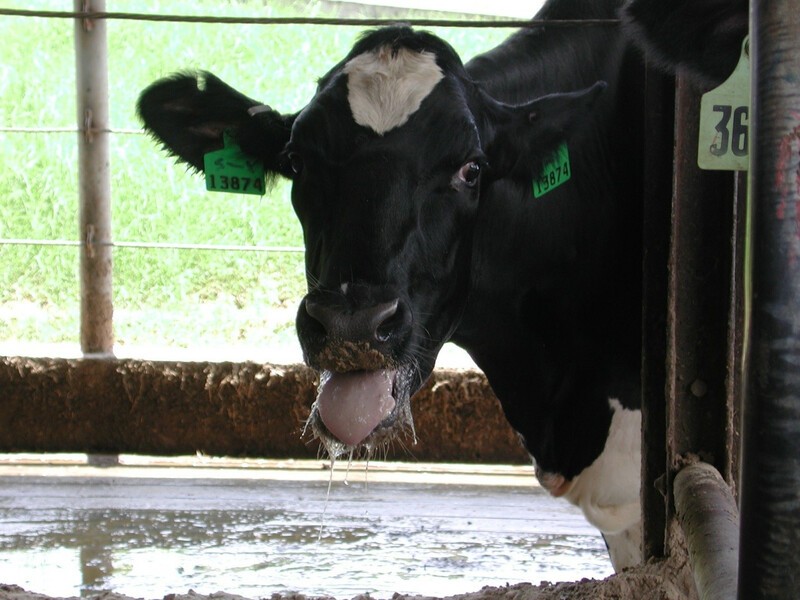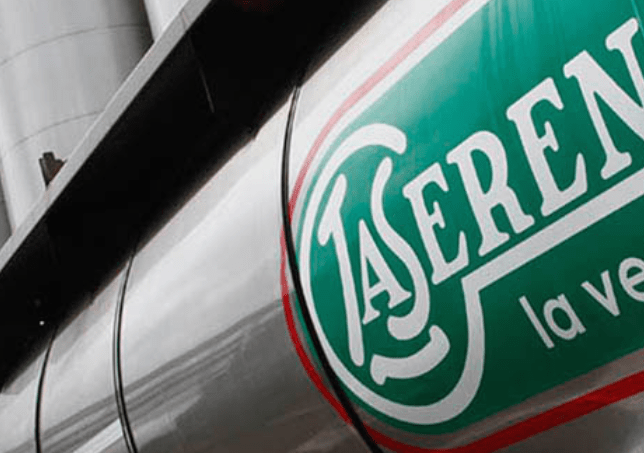Heat stress can be measured by the temperature humidity index which is a combination of not only ambient air temperature but also relative humidity of the air. A temperature humidity index of more than 68 is likely to cause heat stress in dairy cows.
“Most of the heat a cow develops is metabolic, which is the body’s process of making energy and milk,” said Jan Shearer, DVM, MS and professor at the Iowa State University College of Veterinary Medicine. “As metabolic rates increase, there’s a greater amount of internal body heat they have to dissipate.”
The effect of heat stress on milk production used to be strictly associated with a reduction in feed intake, but now it’s known to be more complex than that. For example, water intake during heat stress is critically important to dairy cows. Milk is about 85% to 90% water. To have high-producing cows, it’s important to have a sufficient supply of drinking water because cows use water to make milk, but they also emit water and moisture from their skin in the process of cooling when experiencing heat stress. They lose some moisture from the respiratory process during heat stress through panting and in more severe cases, open mouth breathing.
“Once the environment is above roughly 78°F or temperature humidity index of 68, animals start to experience rather significant discomfort that includes a variety of physiological changes which will lead to reduced performance,” he explained.
Impacts of Heat Stress
The reduction of feed intake from heat stress can set off other metabolic factors related to mastitis, bacteria growth, and fertility.
“We see somatic cell counts tend to increase in mid- to late summer, which has a relationship to heat stress and is associated with increased mastitis infections,” he noted. “This is likely because the environment is more conducive to survival of bacteria than it is to survival in the cow. The stress itself and the potential effects on the animal’s immune system are another factor.”
The increase in bacteria is another milk quality concern. Try to limit the number of bacteria by keeping the udder clean and dry. This can be difficult if heat stress isn’t being well-managed because cow behavior will lead the cow to a wet place to try and cool themselves.
“A hot, moist environment is ideal for most pathogens, and that’s where milk quality can be affected a lot by heat stress,” Dr. Shearer described. “Pre-cleaning, pre-dipping and post-dipping are key factors in controlling mastitis amid heat stress.”
Fertility is another area that can be impacted by heat stress, said Dr. Shearer. A cow that is cycling and in heat during a period of heat stress is less likely to show significant signs of estrous. If she does become pregnant, the risk of early embryonic death is much higher if she’s severely stressed during that time. For cows that are heat stressed with a calf in gestation, when the calf is born, they are often 8% to 10% smaller. If heat stress hits during the dry period, it can affect the amount of milk produced in the subsequent lactation.
Tips for Heat Abatement
Access to shade: Shade is important no matter your location because the effects of solar radiation are significant. It not only heats up the animal, but solar radiation also heats up everything around the animal, leaving no place to escape.
Moisture: Moisture can be used to not only cool the air, but also to wet the cow’s skin, thereby increasing the evaporative cooling from her skin. However, using moisture to cool is not a one size fits all; manage and use misters and foggers based on location and humidity levels.
Fans: Continuous airflow with a velocity of 400 to 600 feet per minute can add supplemental cooling when used with misters and foggers.
Access to plenty of water: Keep water receptacles clean and encourage cows to drink.
“For those looking to maximize water use for cooling, I suggest the holding pen,” said Dr. Shearer. “It can be a good place to set up exit lane sprinklers to cool the cows as they head back to the pen. Especially where water supplies may be tight, look for those opportunities to get the most cooling bang for your buck.”













